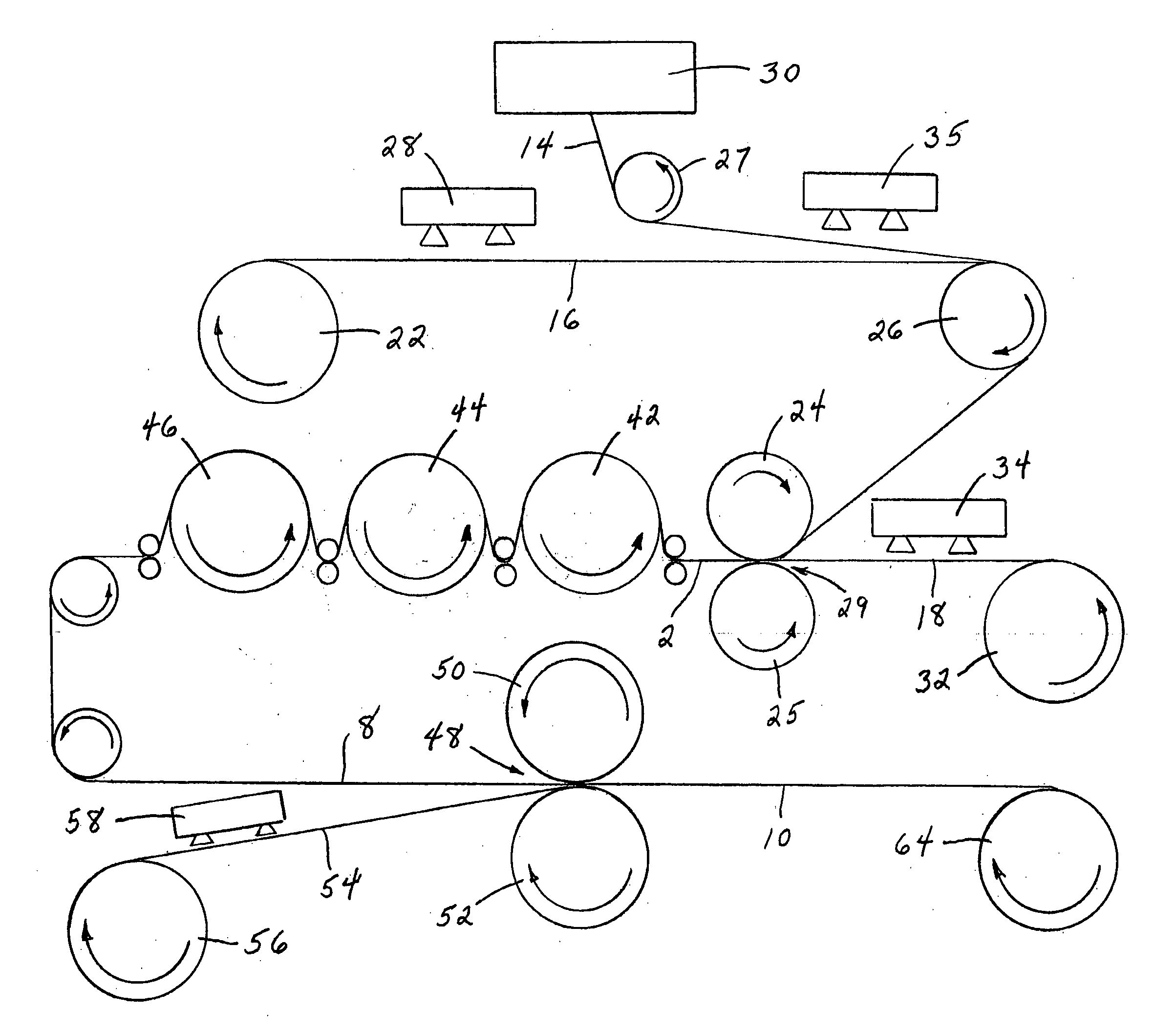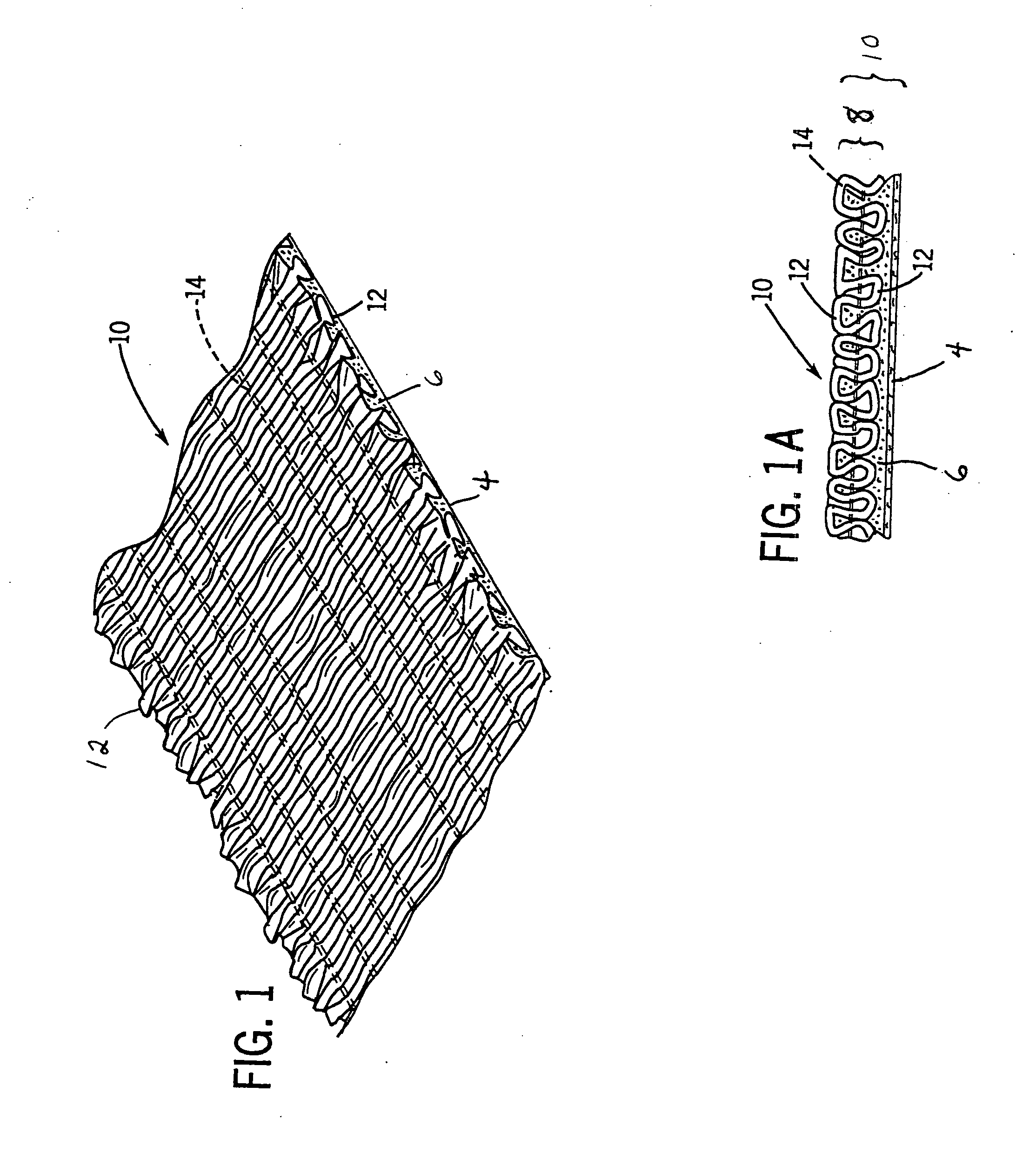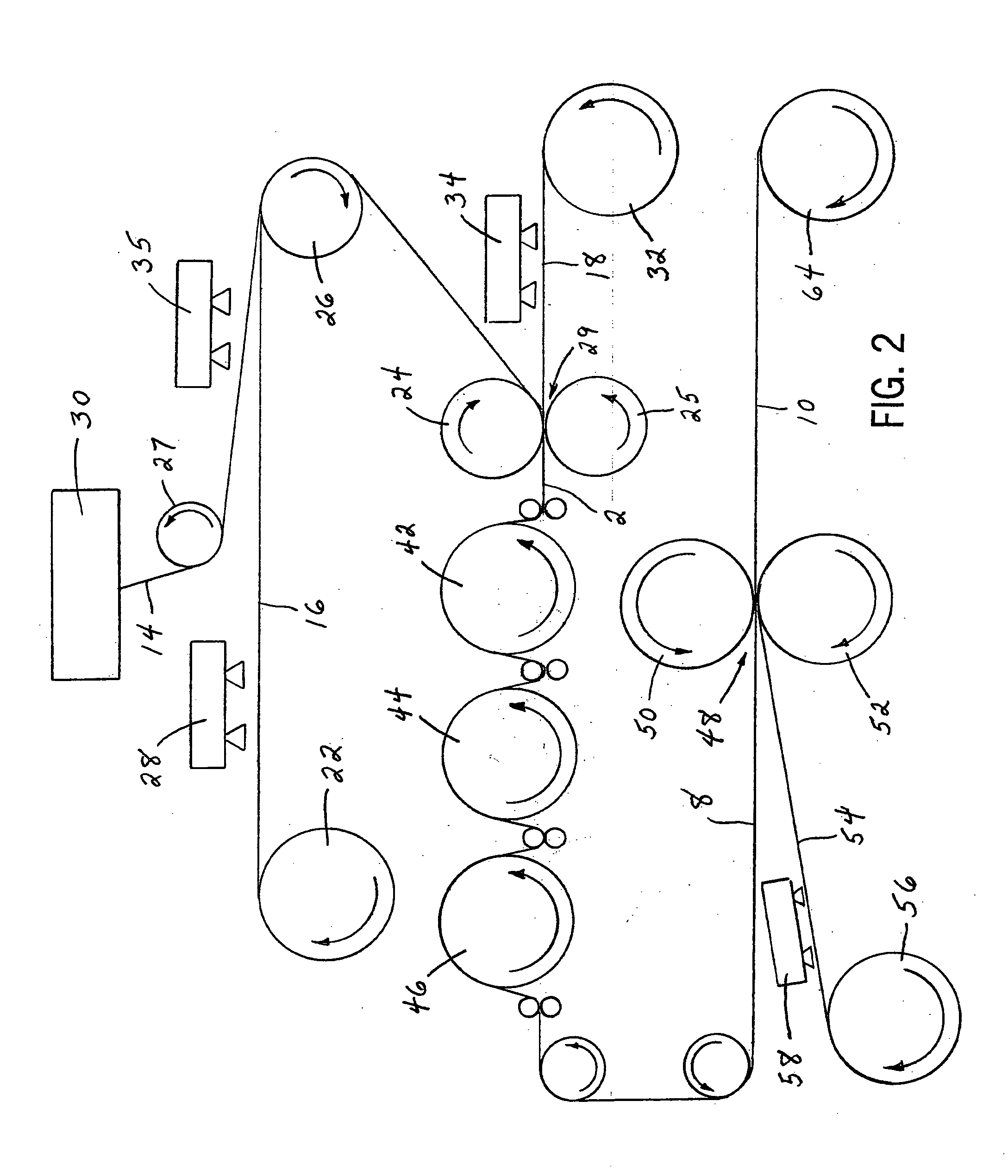Method of making an elastic laminate using direct contact thermal rolls for controlling web contraction
a technology of thermal rolls and elastic webs, applied in the field of manufacturing laminated elastic webs, can solve the problems of low “green” strength of adhesives, low performance of hot melt adhesives, and complex machine tools and tools required for integral fabrication of laminated elastic articles, and achieve the effect of avoiding undesirable skewing and stove-pip
- Summary
- Abstract
- Description
- Claims
- Application Information
AI Technical Summary
Benefits of technology
Problems solved by technology
Method used
Image
Examples
example one
[0052] This example demonstrates formation of an elastic laminate comprising as one component thereof a gathered elastomeric web having a first substrate of an embossed and creped flash-spun non-woven high density polyethylene, a second substrate comprising a linear low density polyethylene film, and an array of Lycra® XA spandex elastic yarns sandwiched between the two layers with the substrates being bonded using a combination of two adhesives, one a thermoplastic hot melt and the other a moisture curable polyurethane adhesive. The gathered web was prepared in accordance with the process of FIG. 2 and was covered on one side with a butyl adhesive and a release liner made of siliconized paper.
[0053] The substrates were laminated at a lamination speed of 300 ft / min with an array of 48 strands of Lycra® XA spandex having a linear density of 620 decitex per filament. The embossed side of the first substrate was adjacent the spandex array. The individual spandex strands were equally s...
PUM
| Property | Measurement | Unit |
|---|---|---|
| temperature | aaaaa | aaaaa |
| width | aaaaa | aaaaa |
| elongation | aaaaa | aaaaa |
Abstract
Description
Claims
Application Information
 Login to View More
Login to View More - R&D
- Intellectual Property
- Life Sciences
- Materials
- Tech Scout
- Unparalleled Data Quality
- Higher Quality Content
- 60% Fewer Hallucinations
Browse by: Latest US Patents, China's latest patents, Technical Efficacy Thesaurus, Application Domain, Technology Topic, Popular Technical Reports.
© 2025 PatSnap. All rights reserved.Legal|Privacy policy|Modern Slavery Act Transparency Statement|Sitemap|About US| Contact US: help@patsnap.com



